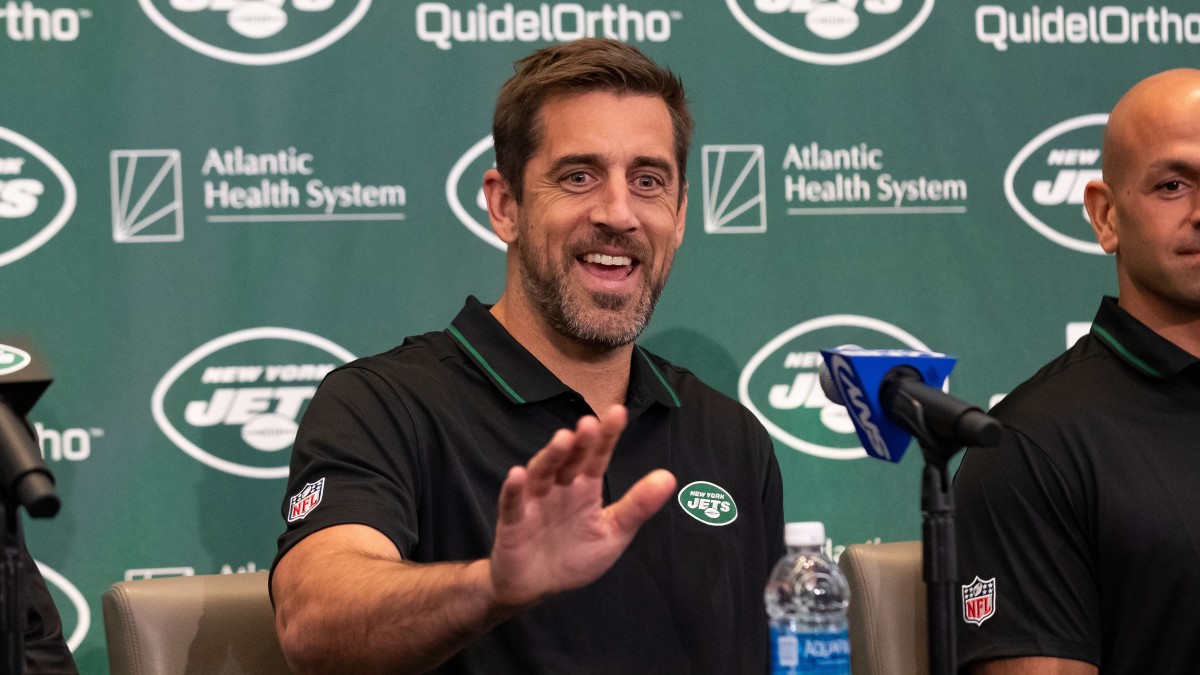SI Goes Inside the Packers-Jets Negotiations for Rodgers

GREEN BAY, Wis. – Aaron Rodgers said he appreciates direct communication and relationships.
“(I’m) … thankful for the Packers organization and the conversations that we had at the end of the season and just the way the whole season went,” Rodgers said at NFL Honors in February 2022 after winning his fourth MVP. “I was obviously frustrated about some things in the offseason. We had a ton of conversations and I just felt like there was so much growth, and I’m so thankful for that. I’m thankful for the relationships – with Brian as much as anybody.”
When it was time to sort out his future, both as an NFL quarterback and as a member of the Green Bay Packers, Rodgers turned off the line of communication and severed his relationship with general manager Brian Gutekunst.
In Sports Illustrated’s Daily Cover, Albert Breer took a deep dive into the six weeks of negotiations that led to Rodgers being traded to the New York Jets.
The Packers’ season ended with a loss to the Detroit Lions on Jan. 8. When Gutekunst and Rodgers met during exit interviews, the 39-year-old Rodgers said he needed time to consider his future.
A few weeks later, Gutekunst was in Los Angeles for the NFLPA Collegiate Bowl, a game played on Jan. 28. It created a natural opportunity for Gutekunst and Rodgers to continue their conversations. They were supposed to meet, Breer said, but didn’t.
Gutekunst stayed out West for another week for the East-West Shrine Bowl, a game played on Feb. 2 in Las Vegas. With Gutekunst a short flight away, setting up another meeting was “broached,” Breer said, but that didn’t take place, either.
So, with Gutekunst unable to talk to Rodgers and with Jordan Love rising in the background, Breer reported Gutekunst began reaching out to teams that might need a quarterback.
The Jets’ Joe Douglas was “the one” general manager who said yes.
With Rodgers, via agent David Dunn, telling the Jets that he was onboard, it was up to Gutekunst and Douglas to hammer out the trade.
Initially, Breer wrote, the Packers wanted a Matthew Stafford-style trade in which the Rams sent the Lions two first-round picks and a third-rounder to land their missing-piece quarterback. The Jets didn’t want to give up any first-rounders.
Eventually, following on-again, off-again negotiations and a series of proposals authored by Gutekunst, the two men agreed to a trade that left both of them unsatisfied. The “mutual discomfort,” as Breer put it, was a sign of a “fair” compromise.
The Packers and Jets swapped their 2023 first round picks, with Green Bay moving from No. 15 to No. 13 and picking Iowa’s Lukas Van Ness. Green Bay also received a second-round pick in the 2023 draft and a second-round pick in 2024 that could move to a first-rounder if Rodgers plays 65 percent of the offensive snaps this season.
“I thought play time was the right thing. That made sense to me,” Gutekunst said before the draft. “We kind of went back and forth a little bit and we kind of settled on that.”
While the Jets rejoiced at getting the four-time MVP, Breer wrote, Gutekunst and his top lieutenants “took a second” and got back to studying cornerbacks.
For a much more extensive look at how Rodgers became a Jet, check out Breer’s full story at SI.com.
More Green Bay Packers News
Source: Packers not re-signing Marcedes Lewis
Packers pass on Fritz Shurmur’s grandson …
… But they did sign a cornerback
Tucker Kraft’s all about loyalty
Colby Wooden: ‘I just love football’
Sean Clifford beat out Will Levis; now, it’s Danny Etling
NFL Draft delivers swing in NFC North odds
Anthony Johnson embraced move to safety at Iowa State
Are Green Bay’s weaknesses really weaknesses?
Just how young is Green Bay’s receiver corps? 32-team breakdown






